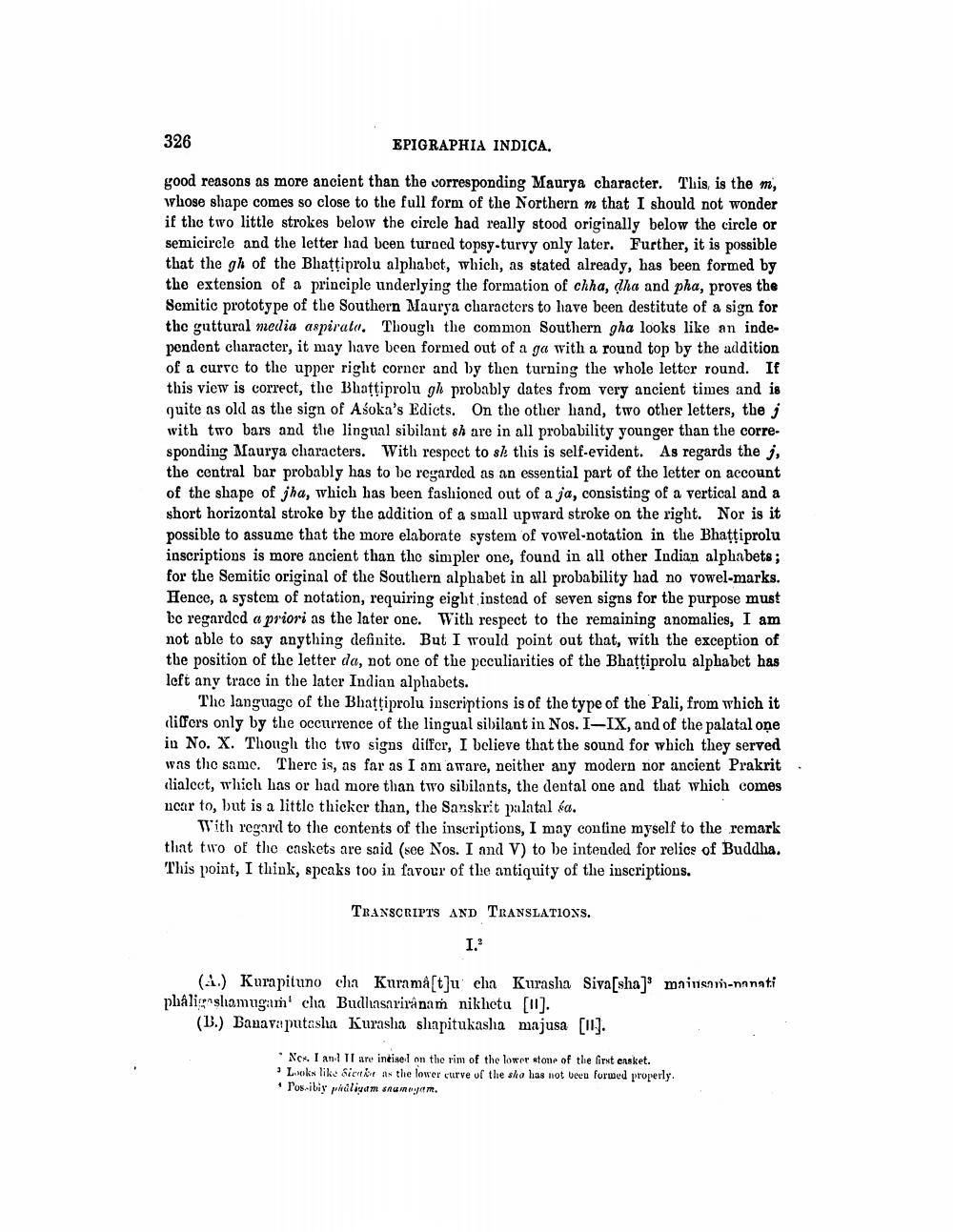________________
326
good reasons as more ancient than the corresponding Maurya character. This, is the m, whose shape comes so close to the full form of the Northern m that I should not wonder if the two little strokes below the circle had really stood originally below the circle or semicircle and the letter had been turned topsy-turvy only later. Further, it is possible that the gh of the Bhattiprolu alphabet, which, as stated already, has been formed by the extension of a principle underlying the formation of chha, dha and pha, proves the Semitic prototype of the Southern Maurya characters to have been destitute of a sign for the guttural media aspirata. Though the common Southern gha looks like an independent character, it may have been formed out of a ga with a round top by the addition of a curve to the upper right corner and by then turning the whole letter round. If this view is correct, the Bhattiprolu gh probably dates from very ancient times and is quite as old as the sign of Aśoka's Edicts. On the other hand, two other letters, the j with two bars and the lingual sibilant sh are in all probability younger than the corresponding Maurya characters. With respect to sk this is self-evident. As regards the j, the central bar probably has to be regarded as an essential part of the letter on account of the shape of jha, which has been fashioned out of a ja, consisting of a vertical and a short horizontal stroke by the addition of a small upward stroke on the right. Nor is it possible to assume that the more elaborate system of vowel-notation in the Bhattiprolu inscriptions is more ancient than the simpler one, found in all other Indian alphabets; for the Semitic original of the Southern alphabet in all probability had no vowel-marks. Hence, a system of notation, requiring eight instead of seven signs for the purpose must be regarded a priori as the later one. With respect to the remaining anomalies, I am not able to say anything definite. But I would point out that, with the exception of the position of the letter da, not one of the peculiarities of the Bhattiprolu alphabet has left any trace in the later Indian alphabets.
The language of the Bhattiprolu inscriptions is of the type of the Pali, from which it differs only by the occurrence of the lingual sibilant in Nos. I-IX, and of the palatal one in No. X. Though the two signs differ, I believe that the sound for which they served was the same. There is, as far as I am aware, neither any modern nor ancient Prakrit dialect, which has or had more than two sibilants, the dental one and that which comes ncar to, but is a little thicker than, the Sanskrit palatal sa.
EPIGRAPHIA INDICA.
With regard to the contents of the inscriptions, I may confine myself to the remark that two of the caskets are said (see Nos. I and V) to be intended for relics of Buddha. This point, I think, speaks too in favour of the antiquity of the inscriptions.
TRANSCRIPTS AND TRANSLATIONS.
1.3
(A) Kurapituno cha Kurama[t]u cha Kurasha Siva[sha] mainsh-anti phâlig shamugam cha Budhasariranam nikhetu [11].
(B) Banavapatosha Kurasha shapitukasha majusa [1].
Nes. I and II are ineised on the rim of the lower stone of the first casket. Looks like Sienke as the lower curve of the sho has not been formed properly. Pos-ibiy phaliyam snameyam.




